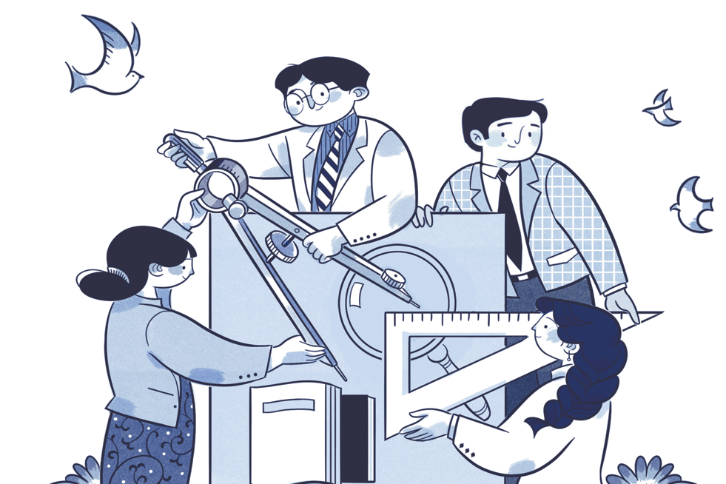EU's carbon tariff and its implications for China


China's carbon market needs to grow to offset some long-term impacts of the EU's CBAM
After nearly two years of negotiations involving many parties, the Carbon Border Adjustment Mechanism (CBAM) finally completed its legislative process in May. Under the political agreement, the CBAM will come into force in its transitional phase on Oct 1, 2023;the obligation to purchase CBAM certificates will begin on Jan 1,2026. The carbon tariff's impacts on other countries and regions, including China, loom large.
As a matter of fact, throughout the legislative process, the CBAM has always been in the global spotlight and controversy abounds over its mechanism.
The European Union insists on promoting the carbon border adjustment mechanism for two reasons.
To start with, the EU promotes the mechanism as it is in line with its climate ambitions. In 2019, the European Commission unveiled the European Green Deal, raising the EU's ambition for reducing greenhouse gas emissions to at least 55 percent below the 1990 levels by 2030 and pledging to achieve climate neutrality by 2050 — an economy with net-zero greenhouse gas emissions. Since then, the European Commission has started to formulate detailed reform measures on emission reductions. In 2021, the European Commission presented the "Fit for 55" package, which includes a formal proposal for the CBAM.
Second, the CBAM works side-by-side with the reform of the EU Emissions Trading Scheme and seeks to reduce the risk of "carbon leakage" in a more targeted manner. The EU is a global leader in climate action, but as it is continuously raising its climate ambitions, the difference between its climate policy and that of other countries and regions is increasing. It is considered that the enlarged differences in levels of climate ambition could lead to a risk of "carbon leakage", which occurs when EU companies move carbon-intensive production to countries and regions with less stringent climate policies to maintain their cost competitiveness.
An important part of the EU ETS reform included in the "Fit for 55"package is to gradually phase out free allowances under the EU ETS.The phase-out could raise the carbon price in relevant industries and result in "carbon leakage" as EU manufacturers relocate their production elsewhere due to higher carbon prices in the EU.
By confirming that a price has been paid for the embedded carbon emissions generated in the production of certain goods imported into the EU, the CBAM will ensure the carbon price of imports is equivalent to the carbon price of domestic production. Therefore, the CBAM will be gradually phased in as free allowances in the EU ETS are phased out and prevent "carbon leakage" in a more targeted manner.
That said, whether carbon tariff schemes like the CBAM can effectively address "carbon leakage" is a complicated issue. For instance, the carbon tariff could lead to trade diversion or even trade retaliation, which could undermine its role in preventing "carbon leakage".
The CBAM will have limited impacts on China in the short run; however, its long-term impacts shall not be underestimated.
Currently, the CBAM regulation applies to a specified list of goods imported into the EU within the following six carbon-intensive sectors: cement, iron and steel, aluminium, fertilizers, electricity and chemicals (hydrogen), mainly targeting the direct emissions in the production process. The sectors of cement, electricity and fertilizers also have to include the indirect emissions.
Currently, in accordance with the list of goods with Combined Nomenclature codes set out in the CBAM, cement, fertilizers and hydrogen account for a very small proportion of China-EU trade; iron and steel and aluminium together represent less than 2 percent of China's total exports to the EU. Therefore, in the short run, the CBAM has limited impacts on China.
However, in the long run, the CBAM is set to extend the scope of its covered products. The CBAM text specifically says it will gradually include more and more goods which are also covered by the EU ETS, indirect emissions under certain circumstances, and the downstream products. By then, its impacts on Chinese exports to the EU will substantially increase.
Take the iron and steel sector as an example. Although China's iron and steel exports to the EU currently account for a small proportion, China's exports of mechanical equipment, auto and other products that use iron and steel as a raw material account for a very large proportion. If the CBAM broadens the scope to the iron and steel sector's downstream products, the carbon tax could be extremely high for the entire supply chain. The tax volume could be even larger if indirect emissions are also included.
It's worth noting that, according to the CBAM regulation, the EU importer may claim a reduction in the number of CBAM certificates with solid evidence that a carbon price has been effectively paid in the country of origin for the declared emissions embedded in the imported goods. That is to say, Chinese exporters could use China's domestic carbon price to ease the pressure brought by the CBAM and more actively take part in the domestic carbon market. This can potentially push China's carbon market to grow. The premise is that the EU recognizes China's carbon price, which is set to be a significant part of the bilateral dialogue in the years to come.
Since its launch in July 2021, China's national carbon market has made marked progress and substantially raised companies' awareness of emissions reductions. However, more reform measures need to be put in place to make it play a bigger role in stimulating emissions reductions by businesses. For instance, currently, Chinese companies can hardly have a clear anticipation of the carbon price due to the unclear pricing mechanism in the carbon market, making it difficult for them to make decisions on low-carbon investment. Furthermore, there is a wide price gap between China and the EU's carbon markets. A weak carbon price does little to encourage Chinese companies to cut emissions and puts Chinese exporters at a disadvantaged position under the CBAM and other similar schemes.
The carbon price in China's national carbon market has been largely hovering around 55 yuan ($7.72) per ton of CO2 since the start of the year, far below the average price in the EU's carbon market (around 80 euros, or $85.71, per ton of CO2). Due to the relatively low carbon price and the free allowances handed out by the government, the cost of CO2 emissions has not been fully reflected in China's carbon prices. Thus, emissions reductions are not effectively factored in companies' investment and operational decisions, as they lack the motivation to do so.
Learning from the reform measures of the EU ETS, China's carbon market can put forth a specific phase-out plan for free allowances, which can provide companies with a long-term visibility and predictability to make their decisions on low-carbon investment. In the meantime, auctioning of the allowances instead of grandfathering helps discover an efficient carbon price in the market, and hence to better motivate companies to reduce emissions.
The author is a lecturer at the China-UK Low Carbon College at Shanghai Jiaotong University. The author contributed this article to China Watch, a think tank powered by China Daily. The views do not necessarily reflect those of China Daily.
Contact the editor at editor@chinawatch.cn.


































